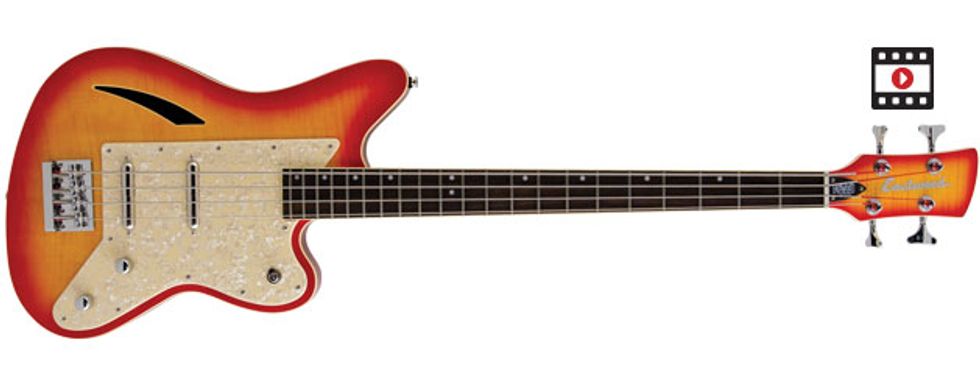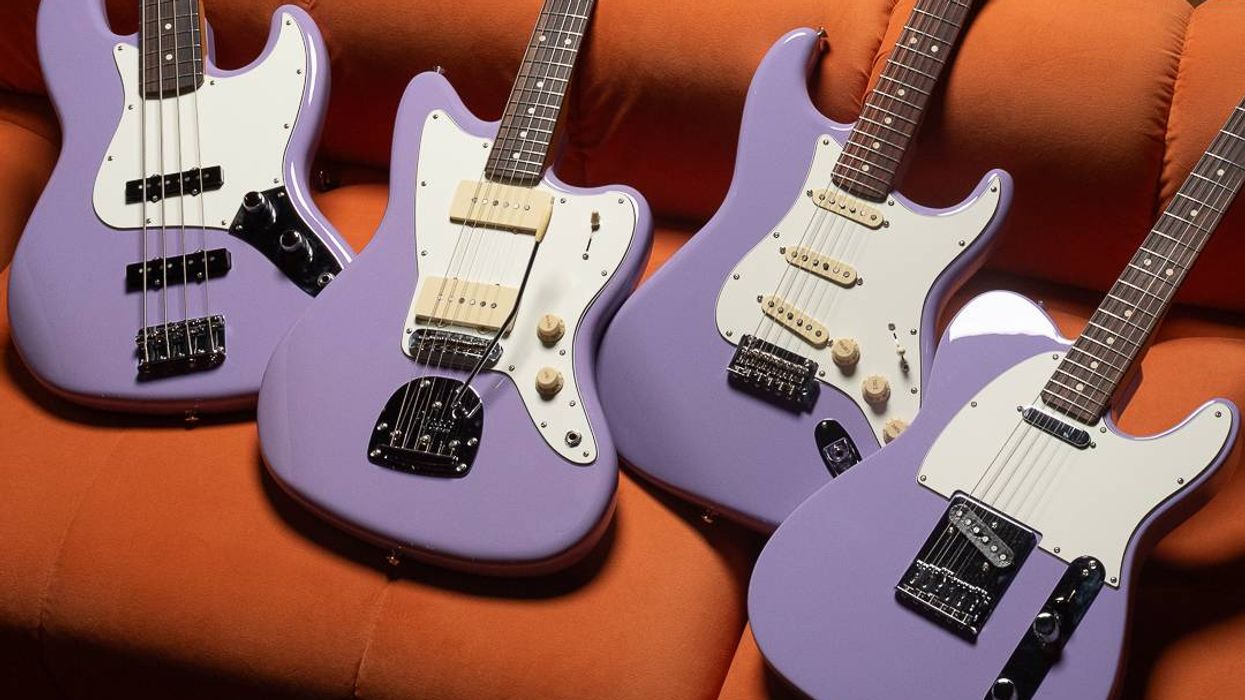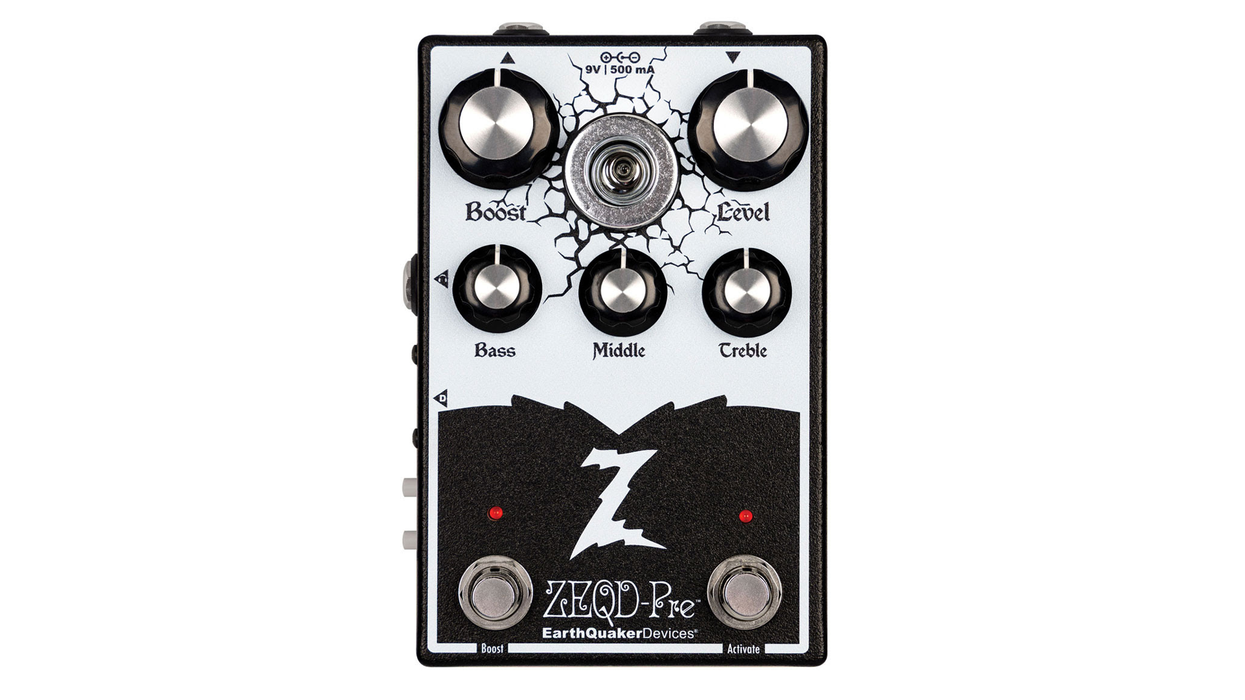For 15 years, Eastwood Guitars has been reissuing favorite left-of-center instruments from the past—variations of models that had limited runs yet somehow captured the essence of their respective times. The company’s latest resurrection is the Surfcaster bass. Charvel originally introduced the vintage-inspired Surfcaster line back in 1991, and the series included a twang-errific guitar as well as a lipstick-loaded bass. (Because of the hard-rock guitars coming out of the shop at the time, the line was a bit of a departure for Charvel.) Fast-forward to today, and here we are looking at Eastwood’s incarnation of the cult-classic 4-string, all new and ready to hang 10.
Surf’s Up
Reissue instruments occasionally make me a little uneasy. I’ll sometimes wonder why the production of a particular guitar ceased in the first place. Was it something outside of the manufacturer’s control, like changing musical tides (pun intended), or maybe the design wasn’t that great to begin with?
As I opened the Eastwood-logoed hard case, however, I smiled. It was like being at a classic car show and looking at a 1959 Fairlane. The cherry burst finish (seafoam green is also available) with the aged-pearloid pickguard and lipstick pickups stay true to the original. The aged binding is a very nice touch, and the funky pickguard angles give both form and function. This bass is a stunner and I hoped it wasn’t just a pretty face as I eased it out of the case.
Rip Tide
To get started, I plugged the Korean-made Surfcaster into an Eden CXC combo with the EQ set flat. Hats off to the folks at Eastwood for setting up the Surfcaster remarkably well. The extra-low action and super-fast rosewood fretboard impressed from the get-go. The satin finished, bound maple neck felt comfy and smooth, and the offset body allowed for full upper-fret accessibility. Although the chambered mahogany body is indeed light, there was no hint of neck dive when I strapped up.
Ratings
Pros:
Not-too-funky vintage vibe. Solid build and feel. Articulate and warm tone.
Cons:
Tonal variety is limited.
Tones:
Playability:
Build/Design:
Value:
Street:
$899
Eastwood Surfcaster
eastwoodguitars.com
Diming the volume and tone controls, I set the 3-way selector switch to engage both the neck and bridge pickups, and then went to town. The passive lipsticks are handwound in the U.K. by Mojo Pickups. Frankly, they surprised me. The bass produced a warm and robust tone coming in on the slightly midrange-y side, with lots of articulation and point at the same time. It’s not a textbook tone, which I dig, and I found myself playing with this pickup setting for a long time. The Surfcaster has a fingerstyle snap that will cut through the mix nicely and I could imagine this bass being used in a wide variety of musical styles.
Switching to the neck pickup only, the bass remained articulate and warmed up a little more, with a wider low/mid element. The tone was thick, though not P thick. And going the opposite way to the bridge pickup on its own, the tone just wasn’t for me. It definitely takes on a Jazz-pickup identity when soloed, which may work for some, but it was thinner than I am comfortable with. For my taste, the Surfcaster is best served with both pickups wide open.
The original Surfcaster also had a push/pull phase control to give a wider range of tones, but the reissue doesn’t include this option. That said, it’s by no means a deal breaker since I don’t think a thinner tone would necessarily be a plus.
The Verdict
Getting past the fact that this bass is a faithful reproduction of a cult classic and that it looks good enough to hang on the wall, the Surfcaster from Eastwood is an exciting ride. The bass sounds really good and the attention to the past model is evident, from its oversized paddle headstock to the single-crescent soundhole—no frills, great looks, and it sits right where it needs to in the mix. With low action and at just a hair under nine pounds, the Surfcaster definitely fits the bill as a three-set bass. Active-bass enthusiasts might shy away from the Surfcaster because of its passive tonal limitations, but if they do, they’ll be missing out on a lot of fun.
Watch the Review Demo:








![Rig Rundown: AFI [2025]](https://www.premierguitar.com/media-library/youtube.jpg?id=62064741&width=1245&height=700&quality=70&coordinates=0%2C0%2C0%2C0)












 Shop Scott's Rig
Shop Scott's Rig
![Rig Rundown: John 5 [2026]](https://www.premierguitar.com/media-library/youtube.jpg?id=62681883&width=1245&height=700&quality=70&coordinates=0%2C45%2C0%2C45)














































